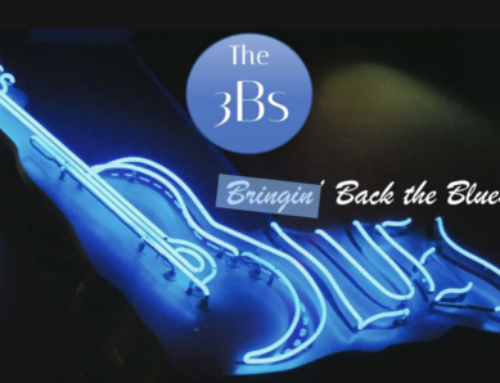by Sarah Zuk, contributor to HearItThere
Tuesday, February 5, 2024
Is K-Pop still popular?
You may have heard of the world-wide success of K-pop a few years ago, but what has been happening since? And what is the reason K-pop became a world-wide phenomenon? My name is Sarah and I am currently studying for my master’s in Arts Management at one of the top universities in South Korea. I first became introduced to K-pop in 2016 when I traveled there for a summer study abroad program. Ever since, I have been a K-pop fan, attending countless concerts and K-pop events, and am even taking courses about the Korean entertainment industry in grad school.
K-pop first blew up on a global level back in 2012 when PSY released the music video to his incredibly fun song, Gangnam Style. The music video quickly broke many records, becoming the most watched video on YouTube in history (at the time). Since then, K-pop artists have been becoming more and more popular worldwide at an exponential rate.
However, it is interesting to note the origins of the K-pop genre before Gangnam Style. Many researchers suggest that the K-pop song structure originated during the Korean War. American soldiers wanted to be entertained in their off-time, but had difficulty understanding performances in Korean. The Korean performers adapted their set lists to include western style songs and dances into their performances to solve this issue. One great example of this is an infamous girl group called the Korean Kittens. They performed for American troops all across Korea and created an atmosphere that reminded the soldiers of home. The Korean Kittens also mixed both Korean and English into their performances, one of which is their rendition of The Beatles Can’t Buy Me Love. K-pop songs today also follow a similar structure of mixing both Korean and English into their lyrics, as well as other languages like Spanish and French in some cases. By including multiple languages, K-pop is able to be understood on a global scale not only because music is a universal language, but also because several languages are being used in the lyrics.
– – – – –
There are a plethora of reasons as to why K-pop is so successful, each working together to make it one of the most popular music genres worldwide. One of these reasons is the connection K-pop artists make with their fans. For example, PSY’s Gangnam Style not only has a flashy music video, but also includes a viral dance that is unique and easy enough for many people to learn. Part of the reason why Gangnam Style was so popular was because fans from across the globe could learn the iconic dance and share their performances online.
– – – – –
Social media is used as a platform for K-pop fans to connect and easily share content while also creating parasocial relationships between fans and K-pop idols. One of the most successful K-pop boy groups, BTS, notably has been recognized on a global scale for their various talents, diverse music, and strong connection with fans. BTS became popular by utilizing social media particularly well to establish a passionate and deeply devoted fanbase. BTS focuses on creating content that the fans will become obsessed with and responds to fans personally. Their fanbase has become an expansive, worldwide community called the ARMY, who encourage the involvement of fans in supporting BTS on a daily basis. The largest Korean entertainment companies now use BTS’s social media strategies to increase the chances of their artists’ success by encouraging support from fans online. For example, Hybe Corporation’s WeVerse app is used as a social media platform for artists to communicate directly with fans while also posting content, similar to Instagram or Twitter. Similarly, SM Entertainment developed an app called Lysn that is used as a platform for artists to communicate with fans in a chat room and help form a stronger fan community.

BTS – Image from Rolling Stone Magazine
The K-pop fan base does not only exist digitally though. K-Pop performers are well known for creating a sense of community at their events as well. One of the clever strategies of K-pop is the use of lightsticks. All of the biggest fans purchase lightsticks to hold during the concerts to cheer on the performers. The lightstick designs are specifically unique to fit the theme or image of their favorite K-pop performers. Fans can connect their lightstick via bluetooth to their phone and mark exactly where their seat is in the concert hall. During the K-pop concert, each of the lightsticks glow together to create cool designs, words, and change color based on the songs being performed. Fans gain a sense of community and togetherness when each of the lightsticks glow together, which is referred to as a lightstick ocean.
One could argue the success of the K-pop genre is mainly due to the extremely strong fan bases that support the artists in many different ways. Even during covid, K-pop did exceptionally well with the sales of online concert tickets and merchandise. The K-pop management companies have found many great ways to monetize off of the fans. For example, fans who do not have merchandise like the lightstick feel the need to purchase it in order to enjoy the concert with the rest of the fans.
Also, the success of K-pop artists’ music in the music charts is based on the amount of album sales and streaming on specific music platforms. Therefore, the K-pop management companies found ways to encourage fans to purchase albums and the music online. For example, the company will host exclusive events for fans who purchased albums. In many cases, each album purchase can be considered one lottery ticket to be chosen to attend the exclusive events. The fans who can afford it will purchase hundreds of albums for a higher chance to meet their idols. The management companies also make the albums more special than simply buying a CD. Even though the music on the album may be the same, the physical albums come in different versions, including photo books with special items like photocards. Photocards are small, high school picture esc photos of the K-pop stars that fans collect and trade like baseball cards. Each album comes with random photocards, encouraging fans to purchase several albums in order to collect each of the cards. One great example of the manufacturing of several different versions of albums is when the popular boy group Seventeen, which has thirteen members, had thirteen versions of their album that included a different photobook for each group member. All of these strategies are cleverly used to increase profits for the K-pop management company, but also strengthen the fanbase supporting the K-pop group by giving them the opportunity to win exclusive events and/or collect special goods.
Looking ahead, there are some highly anticipated K-pop performances that will take place in the New York area this year. BamBam, member of the well-established and extremely successful boy band Got7, will perform for his first solo world tour at the Theater at Madison Square Garden on February 24th. On March 29th, the up-and-coming girl group IVE will perform as a part of their first world tour, ‘Show What I Have’ at the Prudential Center in Newark, NJ. The popular girl group ITZY will also perform this summer at the Prudential Center on June 23rd.
The future of K-pop is bright and still growing. It will be exciting to see what will happen in the future for K-pop!

Author: Sarah Zuk
Bio: Sarah Zuk is currently studying for her master’s degree in Arts Management at Chung-Ang University in Seoul, South Korea. She is a Global Korea Scholarship recipient, the most prestigious scholarship for foreign students studying in Korea. Sarah is particularly passionate about music and has worked at several music venues including Caramoor Center for Music and the Arts and The Ridgefield Playhouse. She also has experience with podcasting at the start-up SpokenLayer. Sarah is currently becoming an expert in the entertainment and cultural tourism industry in Korea, taking all of her graduate-level courses in Korean.
Comments? Send to info@HearItThere.com






